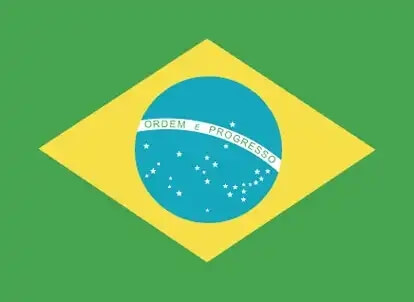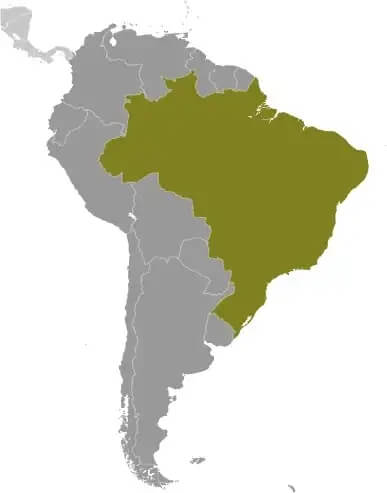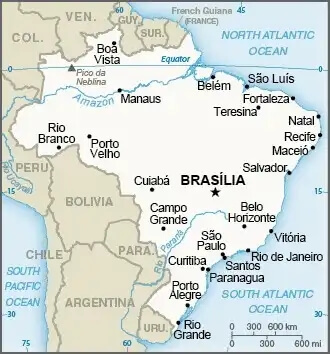World Book
Brazil
World Book Index
69


With a score of 69, the country is ranked 69th out of 158 countries in the World Book ranking. (more information)
Introduction
Background
After more than three centuries under Portuguese rule, Brazil gained its independence in 1822. By far the largest and most populous country in South America, Brazil underwent more than a half century of populist and military government until 1985, when the military regime peacefully ceded power to civilian rulers.
Geography
Area
total : 8,515,770 sq km
land: 8,358,140 sq km
water: 157,630 sq km
Climate
mostly tropical, but temperate in south
Natural resources
alumina, bauxite, beryllium, gold, iron ore, manganese, nickel, niobium, phosphates, platinum, tantalum, tin, rare earth elements, uranium, petroleum, hydropower, timber
People and Society
Population
total: 220,051,512 (2024 est.)
Ethnic groups
mixed 45.3%, White 43.5%, Black 10.2%, Indigenous 0.6%, Asian 0.4% (2022 est.)
Languages
Portuguese (official and most widely spoken language); less common languages include Spanish (border areas and schools), German, Italian, Japanese, English, and many minor Amerindian languages
Religions
Roman Catholic 56.8%, Evangelical 26.9%, none 9.3%, other 4%, Spirtism (Espírita) 1.8%, unspecified 1.4%, Umbanda and Candomblé 1.1%, Indigenous religions .06%, undeclared 0.2% (2022)
Population growth rate
0.61% (2024 est.)
Government
Government type
federal presidential republic
Capital
name: Brasília
Executive branch
chief of state: President Luiz Inácio LULA da Silva (since 1 January 2023)
head of government: President Luiz Inácio LULA da Silva (since 1 January 2023)
Diplomatic representation in the US
chief of mission: Ambassador Maria Luiza Ribeiro VIOTTI (since 30 June 2023)
Diplomatic representation from the US
chief of mission: Ambassador (vacant); Chargé d'Affaires Gabriel ESCOBAR (since 21 January 2025)
Economy
Economic overview
upper-middle-income, largest Latin American economy; Mercosur, BRICS, G20 member and OECD accession candidate; growth driven by strong domestic consumption; monetary tightening helping curb inflation rate; high inequality in income and access to health and education
Real GDP (purchasing power parity)
$4.165 trillion (2024 est.)
$4.029 trillion (2023 est.)
$3.902 trillion (2022 est.)
Real GDP per capita
$19,600 (2024 est.)
$19,100 (2023 est.)
$18,600 (2022 est.)
Exports
$388.333 billion (2024 est.)
$389.192 billion (2023 est.)
$380.492 billion (2022 est.)
Exports - partners
China 30%, USA 10%, Argentina 5%, Netherlands 3%, Chile 2% (2023)
Exports - commodities
soybeans, crude petroleum, iron ore, raw sugar, corn (2023)
Imports
$377.05 billion (2024 est.)
$340.195 billion (2023 est.)
$369.861 billion (2022 est.)
Imports - partners
China 23%, USA 16%, Germany 5%, Argentina 5%, Russia 4% (2023)
Imports - commodities
refined petroleum, fertilizers, crude petroleum, vehicle parts/accessories, gas turbines (2023)
Human Development Index
The country's Human Development Index (HDI) is 0.786, ranking it 84th out of 193 countries tested. (more information)
World Happiness Report
The World Happiness Report ranked the country 62nd out of 158 countries tested with a score of 5.975. (more information)



